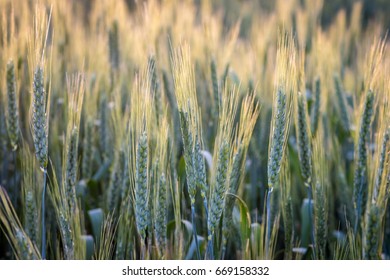Hail or wind damage can rip the plant s boot or flag leaf and the awns catch as the wheat head is emerging which causes the head to look deformed or curled.
Purple awns and head on wheat.
Bands of necrotic and healthy tissue on awns barber s pole are indicative of black chaff.
Partial bleaching of the wheat head is diagnostic of fusarium head blight.
The most effective management strategy for black chaff is the use of certified pathogen free seed.
During wet or humid conditions pink to salmon spore masses may appear on bleached heads figure 3.
The central stem of the head is often brown at the base of spikelet and florets may have an orange mass of fungal spores.
However the damage to john s crop earlier in the season didn t appear to affect yield at harvest.
Infection of the stem peduncle immediately below the head may occur resulting in a brown to purple discol oration figure 4.
Grain often has a white chalky appearance and some kernels may have a pink or reddish discoloration.
De rocquigny 2016 purpling of leaves or melanism may be more prevalent in certain varieties as anthocyanin production can be a genetic.
It has been noted in literature the american varieties amidon and butte has exhibited this purpling.
Bleached spikelets are sterile.
Purple stems in spring wheat at mcvet portage site photo by p.
Unfortunately there s nothing a producer can do to prevent hail damage.
A dark brown to purple discoloration may appear on the stem below the head and above the flag leaf.
These fungal structures or ergots may be 5 to 10 times larger than normal wheat kernels and are often first detected in harvested grain.




























